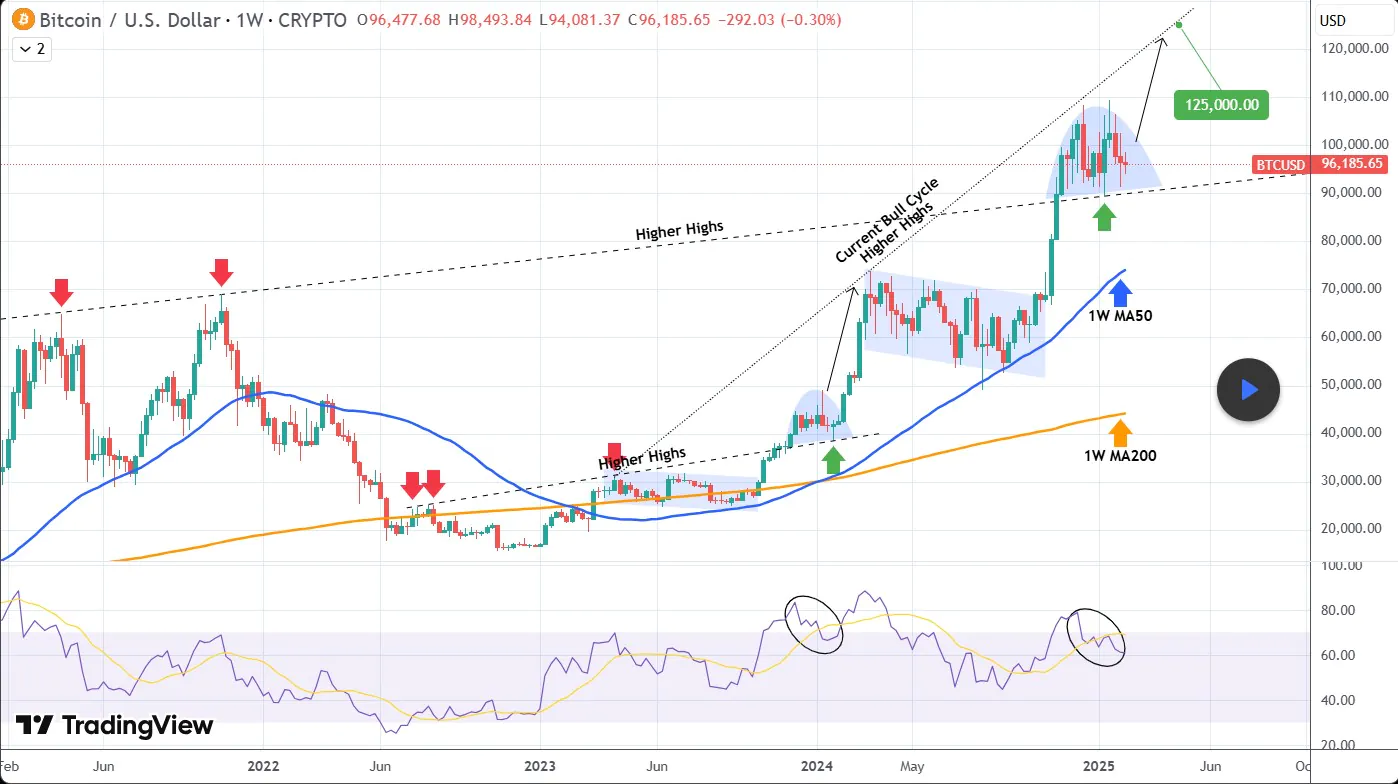Bitcoin has dipped slightly in the past 24 hours, falling to $96,000 amid heightened market volatility. The drop comes after hotter-than-expected economic data fueled inflation concerns, triggering widespread corrections across financial markets.
Despite the turbulence, Bitcoin appears to be following a familiar historical cycle, which could signal the start of a new bull run, potentially pushing prices toward $125,000 in the coming months.
An analysis by TradingShot highlights striking similarities between Bitcoin’s current consolidation phase and previous market cycles. Since reaching its latest all-time highs (ATH) in December 2024 and January 2025, Bitcoin has been trading sideways—a pattern reminiscent of the December 2023 to January 2024 stagnation that preceded a significant rally.

A key observation from analysts is that Bitcoin’s January 2025 low aligns with a rising trendline extending from the cycle peaks of April and November 2021. Notably, this same trendline supported Bitcoin’s January 2024 lows before triggering a strong uptrend in February and March 2024.
If the current support level holds, Bitcoin could soon enter its next bullish phase, potentially surging towards the upper trendline of the ongoing market cycle. Should momentum build as early as this week, analysts predict BTC could climb to at least $125,000.
Beyond technical indicators, macroeconomic concerns continue to impact Bitcoin’s short-term price movements.
On February 13, the latest Producer Price Index (PPI) report revealed higher-than-expected inflation, with monthly and annual increases of 0.4% and 3.5%, respectively. This data has further dampened hopes of an imminent Federal Reserve rate cut, exerting pressure on risk assets, including Bitcoin. However, BTC did experience a brief rally following the report’s release.






